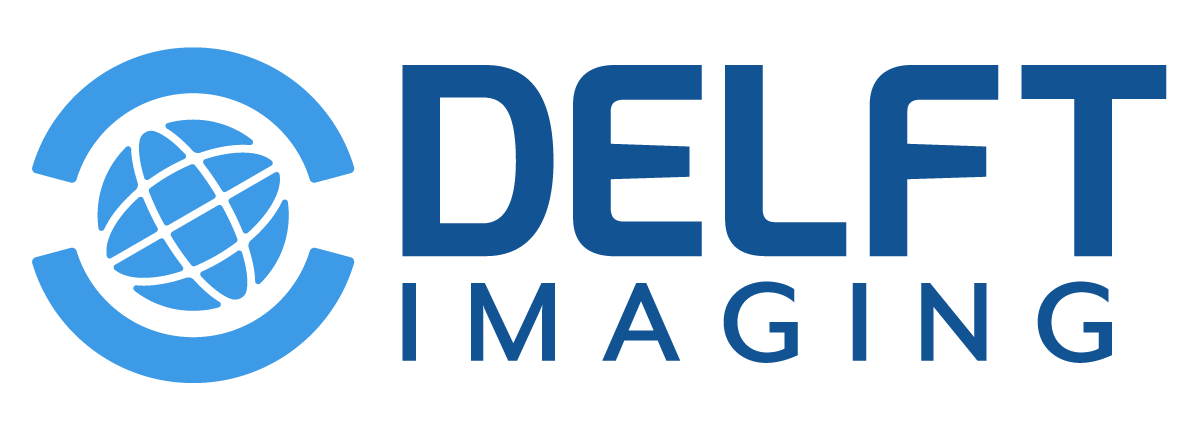South Africa saw 270,000 people develop tuberculosis in 2023, with 56,000 deaths recorded that same year. Over 58,000 people with TB were missed by care, and nearly 150,000 individuals were affected by both TB and HIV, highlighting the urgent need for robust screening and diagnostic capacity. An estimated 13,000 people developed drug-resistant TB in 2023, further compounding the strain on the country’s health system.
Between 2014 and 2015, to support TB detection in high-risk environments, we provided 3 EasyDR digital X-ray systems, each with CAD4TB, for use by the Aurum Institute, TBHIVCare and RightToCare. These systems were deployed across more than 90 correctional facilities nationwide and supported the screening of nearly 800,000 inmates, one of the largest active case-finding efforts of its kind on the continent. The project was made possible through a pay-per-image model, which enabled the delivery of equipment without requiring upfront capital.
Between 2018 and 2020, 5 Delft OneStopTB X-ray Clinics, mobile clinics equipped with EasyDR systems, were delivered for screening in correctional facilities. An additional EasyDR system was installed as a stationary unit in Pollsmoor Prison, the largest and one of the oldest prisons in the Western Cape Province. Each of these systems supported the daily screening of over 200 people.
In 2018, we also delivered 4 Delft OneStopTB X-ray Clinics clinics under an EDCTP grant for Zambart, fitted with the EasyDR and CAD4TB. Two of these were deployed in South Africa.
Over the years, various partners have deployed our solutions to strengthen lung health screening in the nation. In 2021, Winny Solutions deployed a CAD4TB in the region, and 3 Delft Ultra systems were provided to the University of Cape Town Lung Institute. In 2023, LMU Klinikum deployed a CAD4TB, and in 2025, Stellenbosch University procured an additional CAD4TB to support its TB response.

Making a Difference
Research paper
In 2015, a study proved that pre-screening with CAD software (CAD4TB) could increase patient throughput by up to 250% in a typical screening setting. Different thresholds with objective and reproducible results can be chosen with automated reading. A threshold can be set to obtain the desired sensitivity, specificity or throughput accordingly. This makes CAD for TB software highly invaluable in resource-constrained settings. The paper remarked that the CAD software for TB screening could save cost and time in a point-of-care setting. The authors further hypothesised that the algorithm’s value would be even higher in active case-finding scenarios and sputum-scarce cohorts, but it would require further studies.
According to a later 2016 study, the combination of CAD software (CAD4TB) and clinical information offers improved accuracy and increased specificity compared to using either type of information.
A 2020 research showed that using a digital interpretation tool, such as artificial intelligence software (CAD4TB) or a second reader well-equipped in radiological diagnosis of TB, may improve the performance of the TB screening algorithm. Similarly, a recent 2021 study showed that CAD4TB (version 5) perform akin to an expert radiologist in triaging participants for diagnostic sputum testing.
In addition to the multiple research papers on CAD4TB, many have researched the use of Delft Imaging’s computer-aided detection for Silicosis software, also known as CAD4Silicosis.
Recently, in 2022, a study showed that while the current ability of CAD to differentiate between TB and Silicosis is still limited, its use as a mass screening tool for both diseases shows considerable promise.
Another study in the same year proved that the CAD4Silicosis software met the high accuracy benchmark of 90% sensitivity and 70% specificity. It was found that the CAD system can detect silicosis in a population with a high background prevalence of prior TB.
Finally, a recent study showed that the performance of CAD4TB v7 to identify TB in children (<13 years) significantly improved after fine-tuning it with a set of well-characterised paediatric chest x-rays. The study suggested that CAD has the potential to be a useful additional diagnostic tool for paediatric tuberculosis.
A 2024 study evaluating C-reactive protein and computer-aided analysis of chest X-rays as tuberculosis triage tests in Lesotho and South Africa concluded that CAD4TBv7 is an accurate triage test for patients with tuberculosis symptoms in areas with a high burden of tuberculosis and HIV.
Case study
The XACT-19 project evaluated the use of Delft Ultra with CAD4TB v7 in South Africa, Zambia, and Zimbabwe to enhance TB detection through community-based Active Case Finding (ACF). Targeting high-risk groups, the study compared a CAD4TB + Xpert approach against Xpert-only screening. Interim findings revealed a TB positivity rate of 3.8 percent, with over half of the detected cases being asymptomatic. Notably, 20 percent of these asymptomatic individuals were found to be infectious. These results underscore the role of AI-enabled diagnostics in identifying undetected TB transmission. The case study was presented by Dr. Alex Scott at the Union World Conference on Lung Health in Bali, November 2024.
Webinar insights
For more information on how the OneStopTB mobile clinics are used in both South Africa as well as in Zambia, please view the story ‘Practical Considerations for Conducting a TB Prevalence Survey Using the OneStopTB Platform in South Africa and Zambia’, as presented by Dr Chali Wapamesa and Michael Burnett during the 2021 Delft Imaging webinar.
For more information on how CAD4TB is used in South Africa, please view the story ‘The Experience of Using CAD4TB Prospectively in Rural Kwazulu Natal, South Africa’ by Jana Fehr. The story was presented during the 2021 Delft Imaging webinar.
In 2024, during Delft Imaging webinar “Innovation in action: Accelerating TB Screening in Low-Resource Settings with Digital X-rays & CAD,” Prof. Rodney Ehrlich, Senior Research Scholar, Division of Occupational Medicine School of Public Health, University of Cape Town, highlighted the potential of AI in improving the detection of silicosis and TB, stressing that “silicosis is much more sensitive to being missed or misdiagnosed with poor quality chest X-rays.” He underscored the importance of high-quality digital imaging, threshold setting, and operational research to ensure CAD solutions are effectively integrated into screening programs.
Later in 2025, in the webinar “Navigating AI beyond TB: Benefits and Opportunities,” Prof. Ehrlich expanded on these themes, emphasizing that “CAD is used for screening and triage, not diagnosis.” He addressed real-world implementation challenges, including training gaps, cost implications, and the complexity of threshold interpretation. Introducing a two-threshold approach, he also discussed ethical concerns in employment screenings and the need to align AI deployment with practical, contextual, and ethical realities to truly enhance silicosis and TB screening outcomes.
In the same webinar of 2024, “Innovation in action: Accelerating TB Screening in Low-Resource Settings with Digital X-rays & CAD,” Dr. Alex J. Scott, Research Medical Officer Center for Lung Infection and Immunity from the University of Cape Town highlighted the transformative role of portable X-ray systems and AI-powered CAD in closing the TB detection gap in low- and middle-income countries. “Of the 10.6 million people estimated to have fallen ill with TB, there’s still one in three undiagnosed. If we are to find these patients, we’ll need optimum screening and diagnostic strategies,” he stressed. Dr. Scott introduced the XACT model, which integrates portable X-ray units with CAD4TB for active case finding in high-burden communities, noting its success across multiple studies in Africa.
He explained how CAD4TB, powered by deep learning, provides abnormality scores and heatmaps that improve detection sensitivity – even for asymptomatic individuals – and shared real-world cases where CAD identified TB missed by human readers. Dr. Scott concluded that combining portable X-ray technology with AI enables scalable, community-based TB screening, bridging critical diagnostic gaps and improving early intervention.




